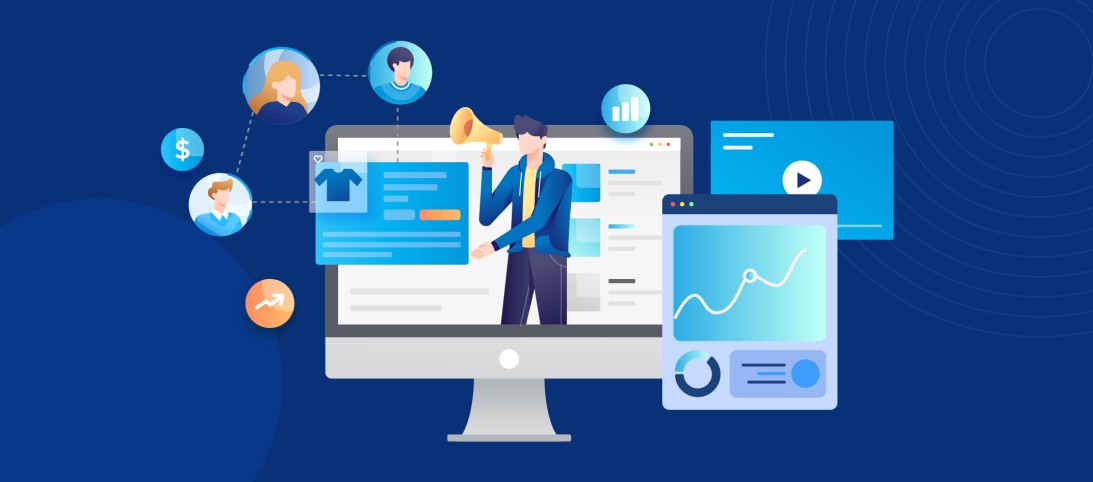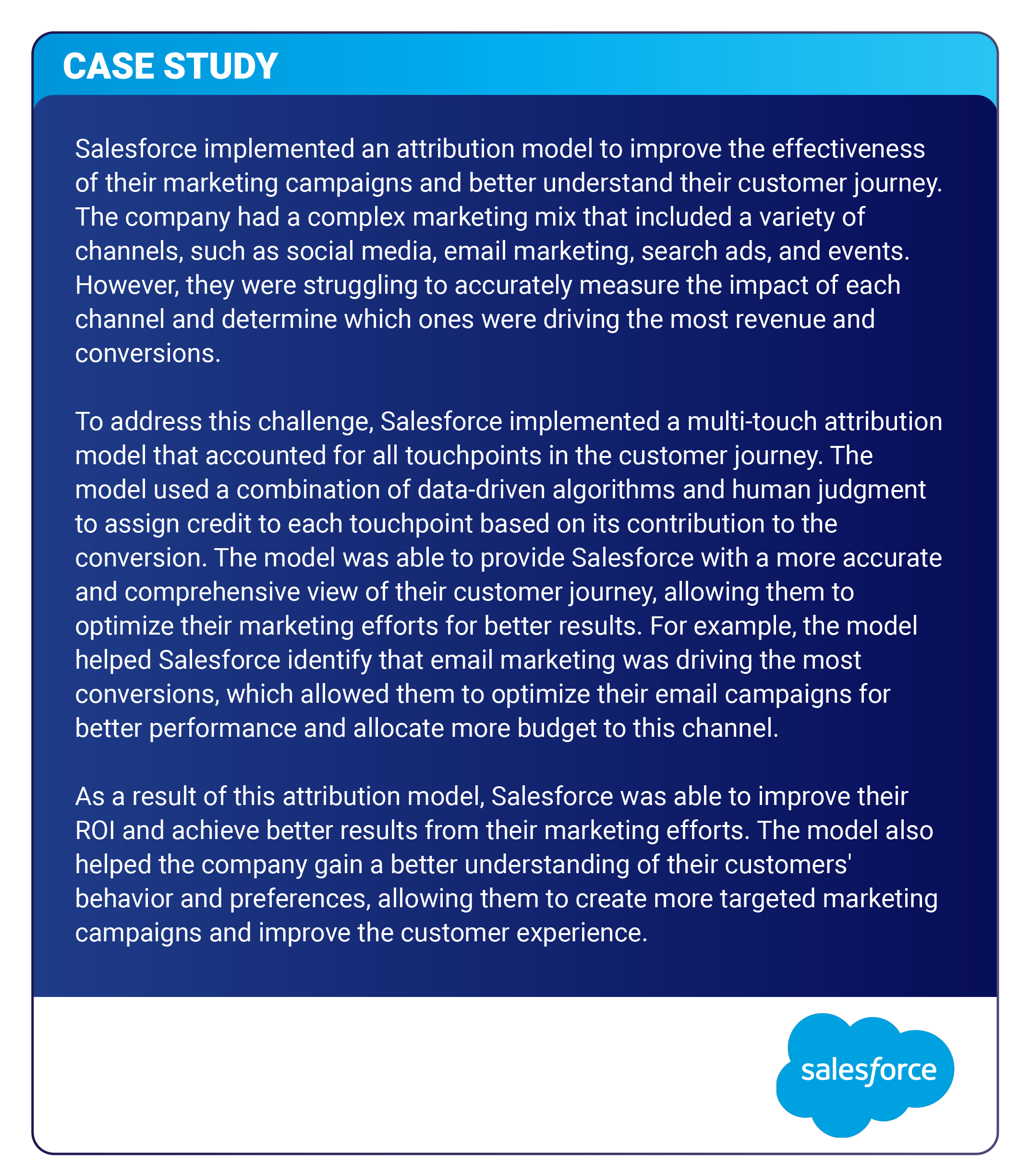The author is a Sr. Director - Delivery in Eucloid. For any queries, reach out to us at: contact@eucloid.com
Leveraging Marketing Attribution to optimize growth and revenue

As an e-commerce business owner, you're constantly looking for ways to drive revenue and grow your customer base. And with the ever-increasing number of digital marketing channels available, it can be challenging to determine which ones are actually working for your business. This is where marketing attribution comes in. With marketing attribution, you can analyze the customer journey and touchpoints to determine which campaigns and channels are generating the most revenue. And by identifying the most effective marketing channels, you can optimize your marketing strategy to drive growth and increase revenue. So, whether you're struggling with flat sales or simply looking to improve your marketing efforts, marketing attribution is an essential tool for any e-commerce business.
Marketing attribution is a sophisticated technique for identifying the touchpoints that play a crucial role in a consumer's journey towards making a purchase. It assigns credit to the different touchpoints and helps in measuring the success of various campaigns and decisions. Moreover, it can help pinpoint potential problems in the buying process and highlight areas where customers may be having a negative experience. The effectiveness of marketing attribution hinges on two critical factors: data (audience, device, media etc) and modelling (interpretation, optimization insights etc). By leveraging this information, marketers can develop actionable insights that help grow their business.
For example, you might discover that a customer discovered your products through a Facebook ad, but didn't make a purchase until they received an email with a discount code. In this case, marketing attribution would credit both the Facebook ad and the email with the sale. By identifying which marketing channels and campaigns are driving sales, e-commerce businesses can adjust their marketing budget and focus on the strategies that generate the most revenue.
How does one setup Marketing attribution?
There are 3 sequential data-sets which help setup attribution - User attributes, media touchpoint, and conversion data.
- User attributes: This dataset is used to link available impression opportunities to anonymized information about the user and is broadly classified as audience and device data. By analyzing these data sources, attribution platforms can create a comprehensive profile of viewership that includes both behavioural and demographic characteristics. This information helps marketers develop more effective campaigns that resonate with their target audience. With the right data, marketers can determine the direct or statistically significant correlations between anonymous individuals and their devices, which aids in crafting campaigns that align with the target audience's interests.
- Media Touchpoints: The information collected above needs to be associated with both online and offline paid media touchpoints that the consumer encounters during the campaign. Media touchpoint data includes information such as ad format (display, video, rich media), cost, and user engagement (clicks, shares, completions, hover time, etc.). In marketing attribution, models benefit from having as much information as possible about media engagement since it indicates the consumer's receptiveness to the message. By understanding the complete media journey, attribution platforms can accurately measure the effectiveness of each media channel and its influence on the final purchase decision.
- Conversion Data: The final step is to measure the impact of ads on consumer behaviour using sales or conversion data, which provides key performance indicators (KPIs) indicative of campaign results. KPIs are optimization metrics that allow marketers to take action based on attribution insights, such as reallocating budget across channels or within channels, and adjusting creative and offers to improve overall marketing performance. While marketers should optimize campaigns against a single primary KPI, they may also track secondary or tertiary metrics that show progress towards achieving the primary KPI.
When setting up attribution models for your business, it's important to consider various factors that can impact their effectiveness and accuracy. To ensure your attribution models align with your business goals, you need to have a clear understanding of the customer journey complexity and the data sources available to you. Accuracy of data is also crucial, so it's essential to ensure that your tracking is set up correctly and your data is free from errors. Additionally, it's important to be aware of any assumptions or biases that may be present in your model and to regularly test and refine it to ensure it remains effective.

What are the types of marketing attribution models?
To implement marketing attribution, e-commerce businesses need to track and analyze customer interactions across various channels, such as social media, email, paid search, and others. There are 6 key marketing attribution models that businesses can use to measure the effectiveness of their marketing efforts:
.jpg)
- First-touch attribution: This model assigns credit for a conversion to the first touchpoint a customer interacts with, making it ideal for businesses focused on lead generation and brand awareness. This model is relatively easy to set up, requiring only basic web analytics data, and is often used by B2B businesses with long sales cycles that involve multiple touchpoints.
- Last-touch attribution: This particular model assigns credit for a conversion to the last touchpoint a customer interacts with before making a purchase, making it ideal for businesses focused on conversion optimization. This model is also simple to set up and provides a clear view of which marketing channels are driving conversions. However, being focused on the last touchpoint, it may not provide a complete view of the customer journey.
- Linear attribution: This model assigns equal credit for a conversion to each touchpoint along the customer journey, providing a simple and straightforward view of marketing performance. This model is easy to set up and is useful for businesses that have a lot of touchpoints across multiple channels. However, because each touchpoint gets equal credit, the model may not accurately reflect the true impact of each touchpoint on the customer journey.
- Time decay attribution: This model assigns more credit to touchpoints that are closer in time to the conversion, with decreasing credit for touchpoints further back in time. This model is best suited for B2B sales. For eg: A lead generated by a whitepaper download might not turn into an eventual sale. So the weight attributed to this action will be comparatively lower. Businesses will further engage with this prospect through additional touchpoints, such as follow-up calls from the team or face-to-face conversations. As the prospect moves down the funnel, the final touchpoints become more critical, and larger weightings are applied to them.
- Position-based attribution: This model assigns the most credit to the first and last touchpoints, with the remaining credit distributed proportionally to the touchpoints in between. Insurance companies can benefit from this model, where customers are acquired on day one and renew their policies after 12 months. The touchpoints and communications during the year are essential and should be rewarded for their impact on the customer's decision to renew. However, the renewal reminder is likely to be the tipping point that warrants a higher attribution percentage than others. This is because it serves as a crucial reminder for customers to renew their policies and represents a significant touchpoint in the customer's journey.
- Algorithmic attribution: This model uses machine learning algorithms to assign credit to touchpoints based on their impact on the customer journey. This model is the most complex to set up and requires large amounts of granular data to be effective. However, it provides the most accurate view of the customer journey and can be customized to fit the unique needs of each business. This model is suitable for businesses that have complex customer journeys across multiple channels.
The attribution model that you use will depend on the type of product and the customer journey which will be unique to that business. An insurance product with an annual renewal cycle requires a different attribution approach than a grocery shop that offers immediate cross-sell and upsell opportunities. Overlapping attribution models can be applied, allowing marketers to choose the most suitable model for their immediate needs and for different stages of the customer journey. For example, positioned attribution can work well for new insurance customers, while a different strategy may be necessary to capitalize on upsell potential when they make a claim. Utilizing various multi-touch attribution models can provide businesses with detailed insights on what works or not for acquisition, retention, cross-sell, and upsell along the entire customer journey.
Setting up an attribution model has several benefits for businesses. It will help you deeply understand the customer journey; It will help you identify the marketing channels and tactics with the highest ROI; It will help you improve the customer experience by providing insights into the customer journey and behavior and also help you make data-driven decisions based on accurate and comprehensive data.
Marketing attribution can help you optimize your marketing efforts for allocate your budget efficiently. Looking to know more? Reach out to us at contact@eucloid.com
Posted on : April 19, 2023
Category : Digital Commerce
About the Authors
